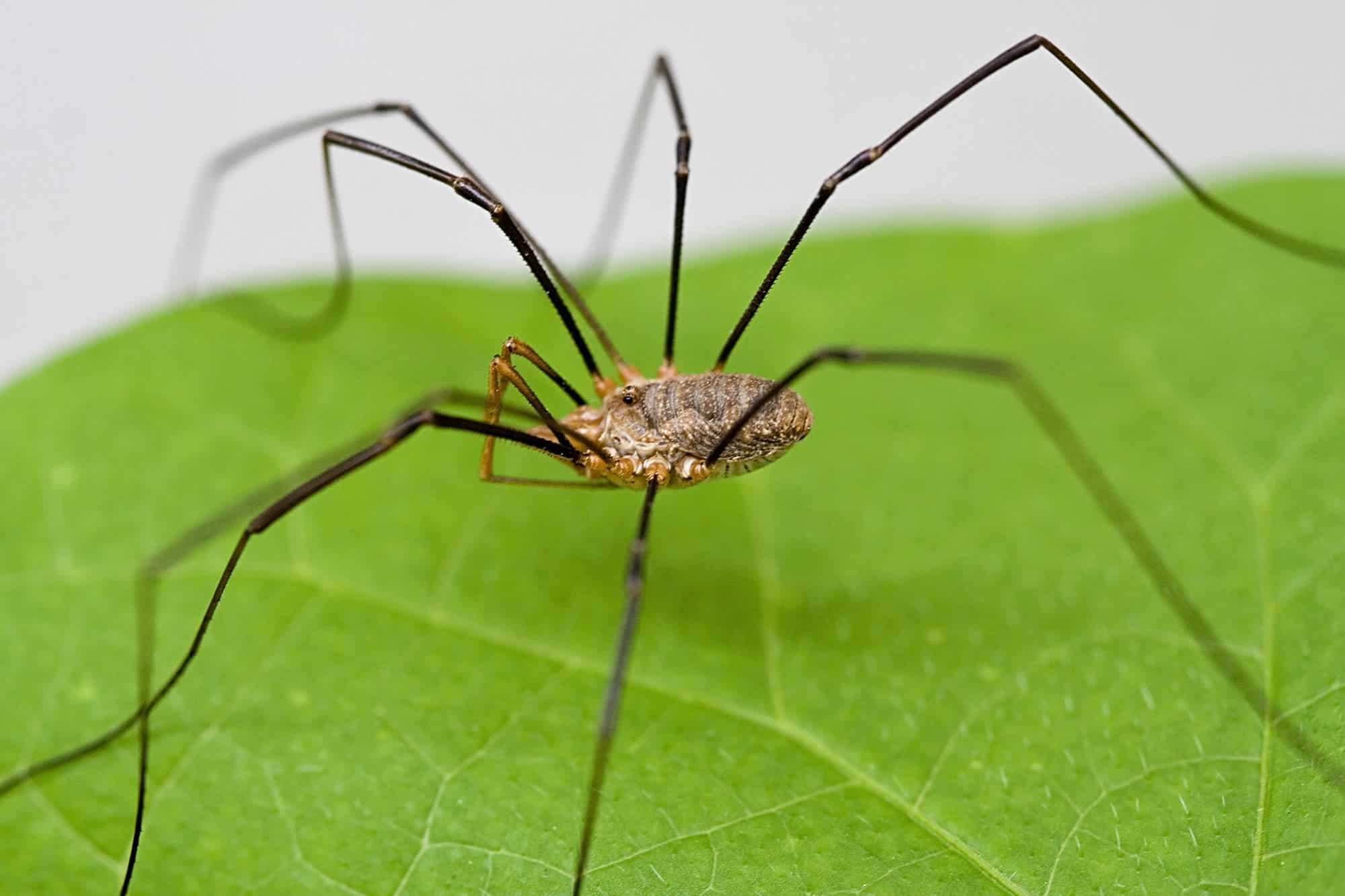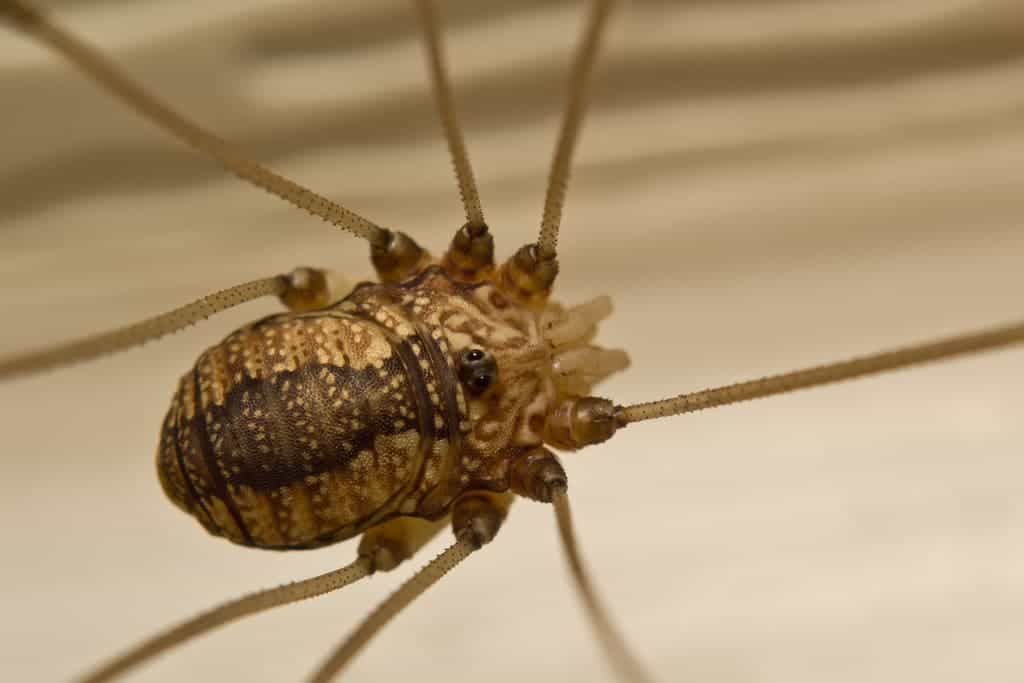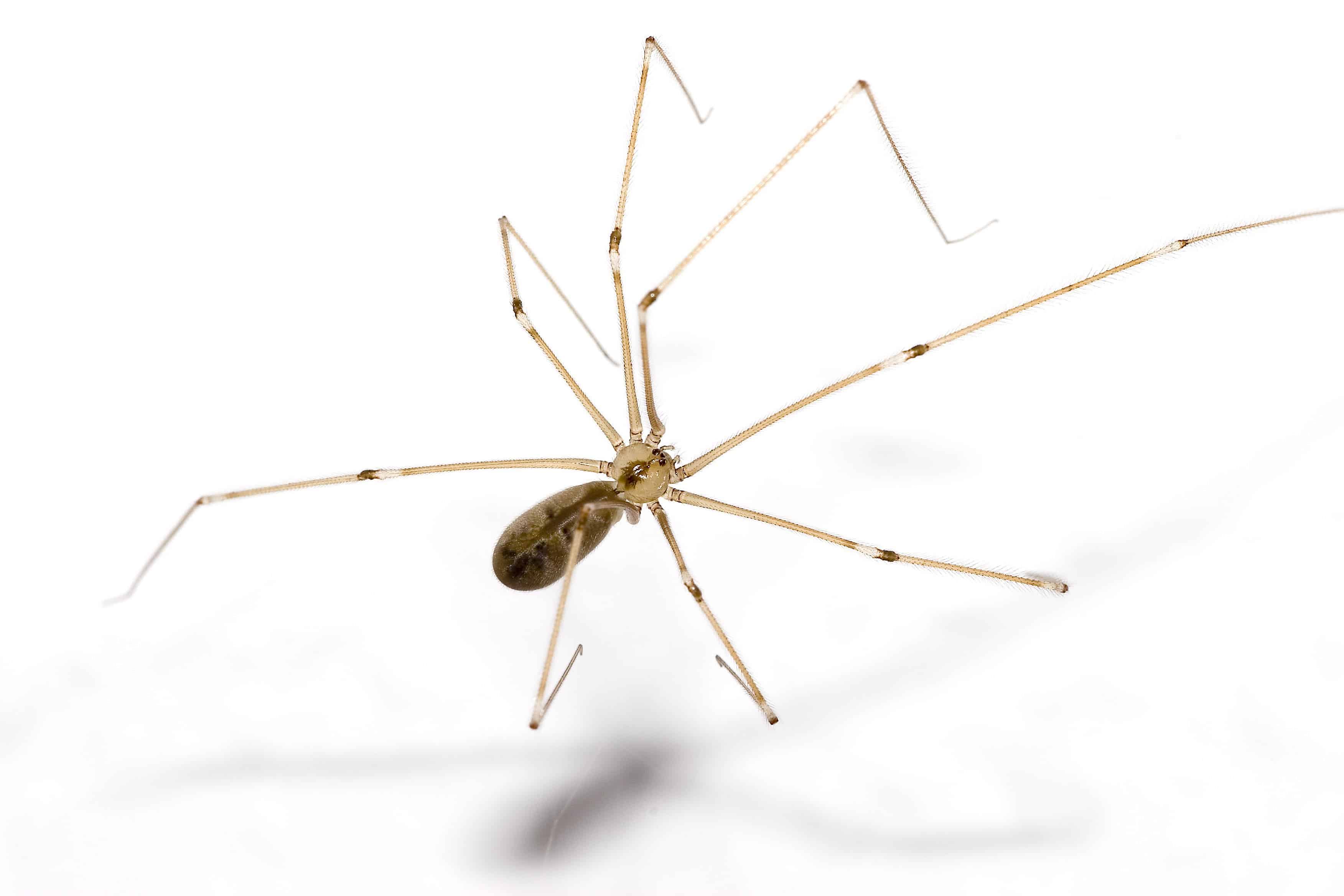Daddy long legs look exactly like spiders at first glance. But these long-legged insects (called ‘harvestmen’ or ‘daddy long legs’) are not technically spiders — although they are related.
But it gets a bit more confusing. Although daddy long legs are not technically spiders, there’s some name confusion. It turns out that someone wasn’t very creative when naming these little critters, and this caused a lot of confusion with their names.
The term “daddy long legs” is commonly used to refer to two different types of creatures, one of which is a type of spider, and the other is not. Here’s a brief explanation:
- Pholcidae, or Cellar Spiders: These are true spiders and are often called “daddy long legs” because of their very long, thin legs. They are harmless to humans and are known for living in human homes, often in cellars or basements.
- Opiliones, or Harvestmen: These are arachnids, but not true spiders. They also have long legs and are often called “daddy long legs.” Unlike spiders, they have a fused body (i.e., their cephalothorax and abdomen are not distinctly separated) and do not produce silk or venom.
Let’s take it one step at a time.
Harvestmen, not spiders

People often confuse spiders and daddy long legs, up to the point where the two become almost synonymous. The fact that both types of animals look similar are also arachnids adds to the confusion. However, there are major differences between them.
The critters most commonly referred to as daddy longlegs are not spiders. They belong to an order called Opiliones and are also known as harvestmen.
Daddy long legs are also arachnids. But so are mites, ticks, and scorpions. In fact, harvestmen are more closely related to scorpions than to spiders. So simply put, they are in the same large group of animals as spiders, but they’re not actually spiders. Scorpions, ticks, and other creatures such as ricinulei also belong to the same group.
While they seem similar to spiders, quite a few characteristics differentiate harvestmen from spiders. For starters, daddy long legs just have two eyes, as opposed to the spiders’ multiple, complex eyes. They also cannot produce silk — and therefore don’t make webs (although contrary to another myth, not all spiders make webs).
Daddy long legs also lack venom glands — and except for two small groups, all spiders have glands that they use to produce and release venom. This is a major difference between the two, as venomous spiders can be harmful to humans. Meanwhile, harvestmen are not considered dangerous to humans as they aren’t venomous. In fact, not only are they harmless to humans, but they’re generally beneficial as they play an important role in controlling many pest populations.

That should help solve most confusions — alas, there’s always a catch.
The spider that is daddy long legs
This is where it really gets confusing: there is also a spider called the daddy longlegs spider. They are also called cellar spiders. They are pale grey or tan and can have markings such as banding or chevron markings. Cellar spiders have typical spider features, like six or eight eyes and two distinct body segments. They produce silk and build a messy irregular web in corners. The threads are not sticky but are used to alert the spider when the prey has hit the web.

Some daddy long legs facts
Daddy long legs live for about 1-2 years, which is relatively long compared to many of their arachnid relatives. In fact, some species can live up to 7 years, or even beyond that.
Unlike male spiders and scorpions that have “fake” penises (usually, modified legs that transfer sperm to females), most harvestmen have proper penises — and they evolved this a long time ago, as highlighted by this amber fossil of a daddy long legs baring its manhood, from 99 million years ago. In fact, the ancestor of the group evolved at least 400 million years ago, before the first dinosaur emerged.
Unsurprisingly, harvestmen take good care of their long legs. Daddy long legs practice a technique called “leg threading”, in which they groom themselves by sliding one leg at a time through their mouth.
Also unlike spiders, harvestmen are quite social — it’s not uncommon to find them in large groups. However, researchers don’t know so much about their social habits, because they’re so difficult to study in the wild.
On a side note
Crane flies are also colloquially referred to as daddy longlegs because — you guessed it — they have long legs. Even though they look like giant mosquitos, most of the adults live for such a short time (only to reproduce) that they don’t eat anything.

All three of these daddy long legs are found all over the world and are common in houses. Now you know what they really are!


